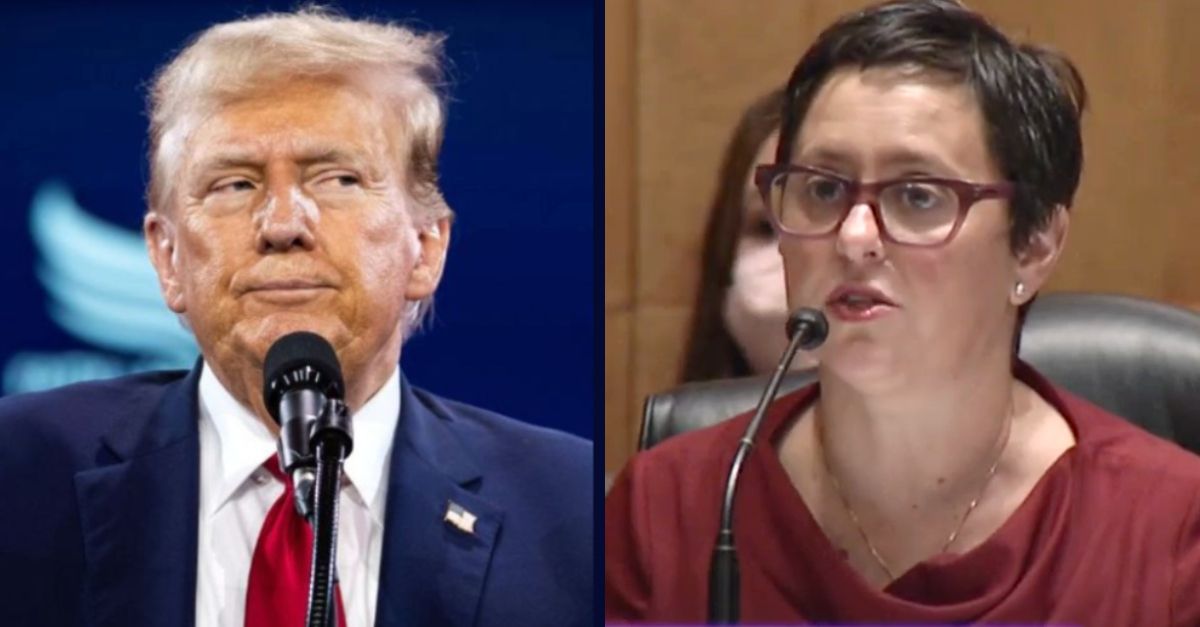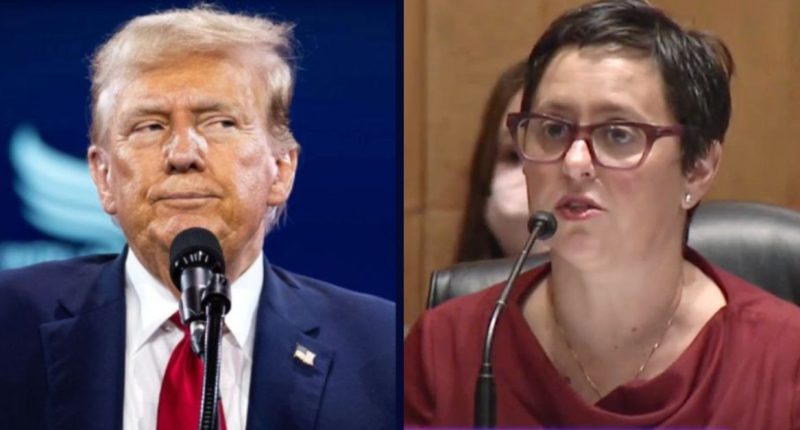
Left: Donald Trump speaks at the annual Road to Majority conference in Washington, DC, in June 2024 (Allison Bailey/NurPhoto via AP). Right: Cathy Harris speaking at a Senate HSGAC Committee nominations hearing on Sept. 21, 2021, to become member and chair of the Merit Systems Protection Board (Sen. James Lankford/YouTube).
A federal appeals court has rejected the Trump administration’s attempt to oust members of two independent federal labor agencies in a pair of back-and-forth cases that will likely set the stage for a showdown at the U.S. Supreme Court and have a profound impact on President Donald Trump’s continued effort to slash the federal workforce.
In a 7-4 vote, the full panel of judges on the U.S. Circuit Court of Appeals for the District of Columbia blocked the president from removing Cathy A. Harris from the Merit Systems Protection Board (MSPB) and Gwynne Wilcox from the National Labor Relations Board (NLRB), reasoning that they were improperly dismissed without cause.
“The government has not demonstrated the requisite ‘strong showing that [it] is likely [to] succeed on the merits’ of these two appeals,” the panel wrote in a three-page per curiam order. “The government likewise has not shown a strong likelihood of success on the merits of its claim that there is no available remedy for Harris or Wilcox, or that allowing the district court’s injunctions to remain in place pending appeal is impermissible.”
The Justice Department argued that prohibiting the president from being able to remove the board members at will effectively disenfranchised those who voted for Trump.
Harris, a Democrat who was nominated to the MSPB by President Joe Biden, was supposed to serve until her term expired in 2028 before she received notice in February that she had been “terminated, effective immediately.” Without Harris, the board lacks a quorum, which could hamper its ability to function as the Trump administration continues its sprawling efforts to gut the federal workforce.
Harris sued the Trump administration and won her job back through a temporary restraining order and a subsequent permanent injunction, both of which were issued by U.S. District Judge Rudolph Contreras. The administration appealed the district court’s ruling and a three-judge appeals court panel late last month voted 2-1 in the government’s favor, staying Contreras’ injunction and allowing both firings to remain in place.
As previously reported by Law&Crime, the 2-1 ruling was particularly vulnerable to being overturned because the majority’s opinion conflicted with long-standing legal precedent stemming from the U.S. Supreme Court’s 1935 decision in Humphrey’s Executor v. United States, which controls the originating statute that created the MSPB: the Civil Service Reform Act of 1978 (CSRA).






